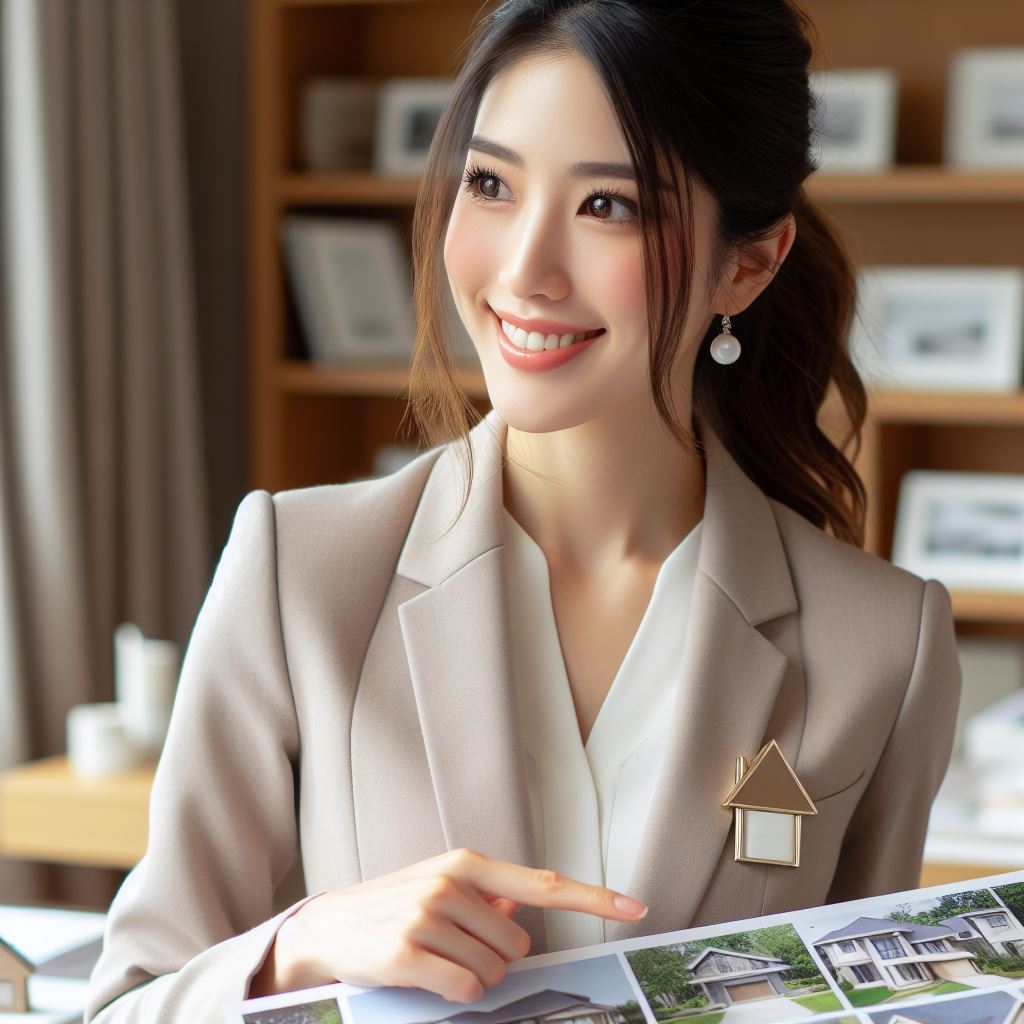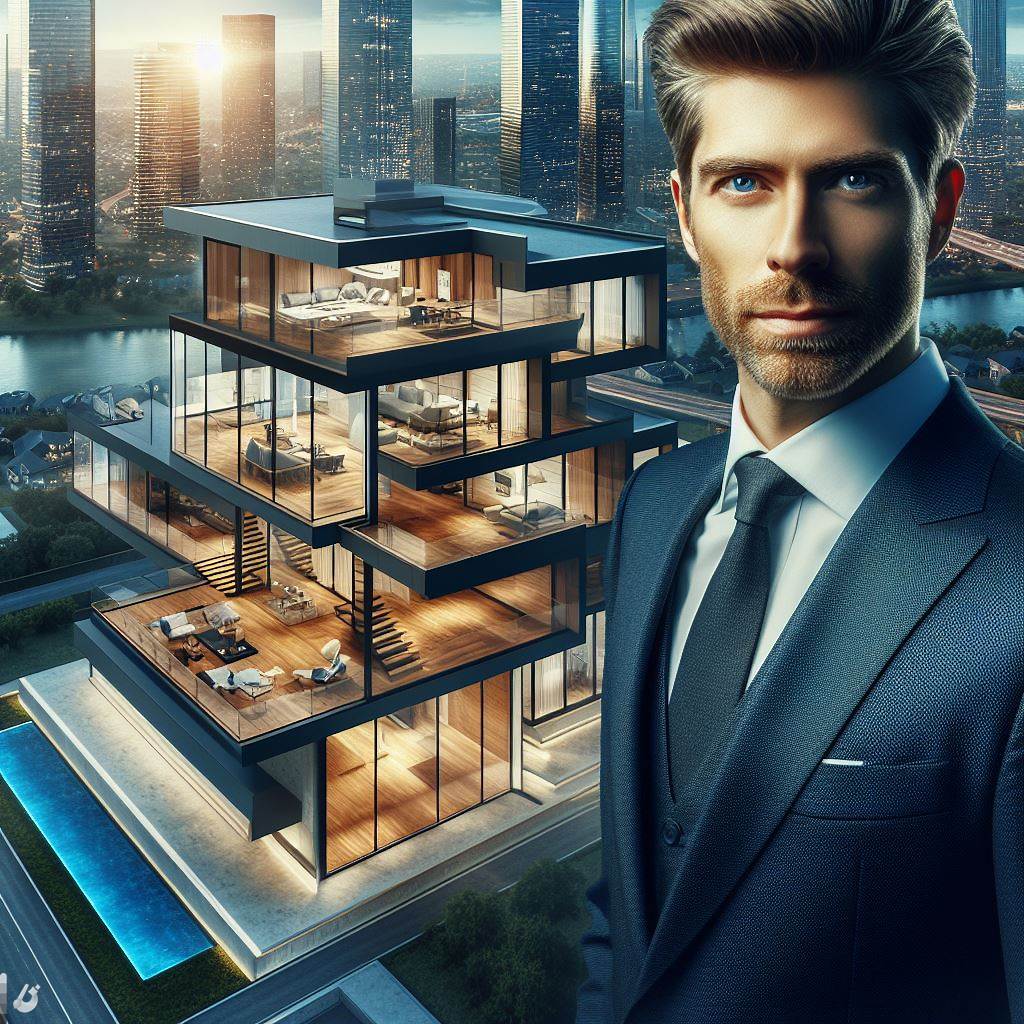Introduction
Eco-friendly luxury encompasses environmentally conscious and sustainable designs, promoting a harmonious coexistence with nature.
Green architecture plays a crucial role in encouraging sustainable living by creating structures that minimize harm to the environment and prioritize energy efficiency.
In this blog post, we will explore various green architecture gems that epitomize eco-friendly luxury.
From stunning eco-resorts to futuristic sustainable homes, these architectural marvels embody the fusion of opulence and environmental consciousness.
Join us as we delve into the world of eco-friendly luxury and discover the beauty and innovation that can be achieved through green architecture.
Read: San Diego’s Prime Real Estate: What’s New?
Definition and Characteristics of Green Architecture
Green architecture and its goals
Green architecture refers to the practice of designing and constructing buildings that are environmentally responsible and resource-efficient.
Its main goal is to minimize the negative impact on the environment throughout the building’s lifecycle.
Sustainable design principles and elements
Green architecture incorporates sustainable design principles and elements to create spaces that are energy-efficient, healthy, and have a minimal environmental footprint.
These principles involve the use of advanced technologies, innovative materials, and careful planning.
The following are some of the key characteristics and principles of green architecture:
- Energy Efficiency: Green buildings are designed to be highly energy-efficient by reducing energy consumption and maximizing energy performance.
This is achieved through proper insulation, efficient heating and cooling systems, and the use of renewable energy sources. - Water Efficiency: Green buildings promote water conservation by implementing efficient plumbing fixtures, rainwater harvesting systems, and wastewater recycling methods.
These measures help reduce water consumption and protect this valuable resource. - Waste Reduction: Green architecture focuses on reducing waste generation during the construction process and throughout the building’s lifecycle.
It encourages the use of recycled materials, efficient construction techniques, and proper waste management practices. - Use of Sustainable Materials: Green buildings utilize sustainable materials that have a low environmental impact.
These materials are renewable, recyclable, non-toxic, and locally sourced whenever possible. Examples include bamboo, recycled steel, and reclaimed wood. - Indoor Environmental Quality: Green architecture emphasizes creating healthy indoor environments by improving air quality, reducing pollutants, and enhancing natural lighting.
This is achieved through proper ventilation systems, the use of non-toxic materials, and incorporating green spaces within the building design.
Benefits of green architecture in terms of energy efficiency, health, and environmental impact
Green architecture offers numerous benefits in terms of energy efficiency, health, and environmental impact:
- Energy Efficiency: Green buildings consume less energy, resulting in lower energy bills for occupants.
They help reduce greenhouse gas emissions and combat climate change by minimizing the use of fossil fuels. - Health: Green buildings prioritize occupants’ health and well-being by providing improved indoor air quality, natural light, and thermal comfort.
This, in turn, promotes productivity, reduces allergies, and enhances overall well-being. - Environmental Impact: Green architecture plays a vital role in reducing the environmental impact of the built environment.
It conserves natural resources, reduces waste generation, and helps protect ecosystems by minimizing pollution and preserving biodiversity.
In essence, green architecture embodies sustainable design principles and elements to create environmentally responsible buildings.
The characteristics of green architecture include energy efficiency, water efficiency, waste reduction, use of sustainable materials, and indoor environmental quality.
Green buildings offer numerous benefits, including energy savings, improved health, and a reduced environmental impact.
By adopting green architecture, we can create a more sustainable and eco-friendly future.
Read: Monochromatic Luxury: A Timeless Trend
Green Architecture Gems: Examples and Case Studies
Green architecture combines luxury with sustainability, creating stunning buildings that have minimal negative impact on the environment.
These architectural gems serve as examples of how eco-friendly design can be integrated seamlessly into urban landscapes.
Example 1: One Central Park, Sydney
One Central Park in Sydney is a landmark development known for its innovative approach to green architecture.
The project focuses on incorporating nature into the cityscape and features stunning vertical gardens that adorn the façades of the buildings.
In addition to the vertical gardens, the project also utilizes solar panels to generate renewable energy and natural ventilation systems to reduce the need for mechanical cooling.
These eco-friendly features not only reduce energy consumption but also enhance the aesthetics of the development.
One Central Park has had a positive impact on the local environment and community.
The green spaces and lush vegetation help mitigate the urban heat island effect, improving the microclimate and air quality.
The project also provides public access to its rooftop gardens, creating a communal space for residents and visitors to enjoy.
Example 2: The Edge, Amsterdam
The Edge, located in Amsterdam, is widely regarded as one of the greenest buildings in the world.
This sustainable office building showcases cutting-edge technology and design principles to minimize its environmental footprint.
The building incorporates smart lighting systems that adjust according to occupancy and natural light levels, reducing energy consumption.
It also implements rainwater harvesting techniques to meet water demand and features an energy-efficient design that optimizes natural daylight and ventilation.
The environmental performance of The Edge has earned it numerous achievements and recognition.
It has received the highest rating for sustainability (BREEAM-NL Outstanding) and has been awarded the title of the world’s most sustainable office building by the Building Research Establishment (BRE).
Example 3: Bosco Verticale, Milan
Bosco Verticale, or Vertical Forest, in Milan, revolutionizes the concept of urban greenery.
The residential buildings are characterized by their extensive vegetation, with each balcony hosting tall trees and shrubs.
The vertical forest concept brings several benefits to the city.
The trees and plants help improve air quality by reducing pollution and producing oxygen.
They also enhance biodiversity by providing habitat for birds and insects.
Additionally, the greenery acts as a natural insulator, reducing the energy needs for heating and cooling and combating the urban heat island effect.
These green architecture gems serve as inspirational examples that demonstrate the potential of eco-friendly design to create luxurious and sustainable buildings.
They show that it is possible to harmonize modern living spaces with nature, benefiting both the environment and the communities they serve.
Read: Inside 2024’s Top Cutting-Edge Luxury Homes

You Might Also Like: Exploring the World of Luxury Properties: What You Need to Know
The Financial Aspect of Green Architecture
When it comes to the financial aspect of green architecture, many people question whether it is affordable.
However, there are several factors to consider that make it a sensible and cost-effective choice.
Whether green architecture is affordable
- Initial costs may be higher, but long-term savings outweigh them.
- Investing in energy-efficient technology decreases operating expenses in the long run.
- Green buildings have lower maintenance and utility costs, leading to significant savings over time.
- Choosing sustainable materials may appear expensive, but they often have longer lifespans, reducing replacement costs.
- Through improved indoor air quality, green buildings promote occupant health, reducing medical expenses.
- Government grants and tax incentives are available to offset the initial investment.
Long-term cost savings through reduced energy consumption and maintenance
One of the main advantages of green architecture is the significant reduction in energy consumption.
By incorporating energy-efficient technologies, such as solar panels and smart heating systems, these buildings consume less energy and save on utility bills.
Moreover, green buildings often require less maintenance due to carefully selected, durable materials and efficient design.
These long-term savings can offset the initial higher cost of constructing a green building.
Economic incentives and certifications promoting sustainable construction
The financial benefits of green architecture extend beyond energy savings.
Many governments and organizations offer economic incentives, grants, and tax credits to encourage sustainable construction practices.
These incentives help offset the initial costs and make green architecture more accessible to builders and developers.
Additionally, certifications like LEED (Leadership in Energy and Environmental Design) provide recognition for green buildings and can increase property value, attracting potential buyers or tenants.
In short, while the initial costs of constructing green buildings may be higher, the long-term cost savings and financial benefits make it a worthwhile investment.
By reducing energy consumption, utilizing sustainable materials, and taking advantage of economic incentives, green architecture proves to be an affordable and financially sensible choice.
With the growing awareness of climate change and the increasing demand for sustainable practices, the popularity of eco-friendly luxury is only expected to rise in the coming years.
Read: Statement Pieces in Luxe Interior Spaces
Conclusion
Eco-friendly luxury and green architecture play a crucial role in creating a sustainable future.
Throughout this blog post, we have explored the importance of embracing sustainable design and the positive impact it has on our environment.
By opting for eco-friendly luxury, we not only reduce our carbon footprint but also contribute to the preservation of natural resources.
Green architecture gems demonstrate that luxury can coexist with sustainability, without compromising on comfort and style.
It is crucial for individuals and communities to embrace sustainable design in their everyday lives.
By making conscious choices, such as using renewable energy sources and incorporating green spaces, we can create a better future for ourselves and generations to come.
We encourage everyone to take action and implement sustainable practices in their homes, offices, and communities.
By doing so, we can contribute to the overall well-being of our planet and reduce the impact of climate change.
In a world where our environment is facing numerous challenges, green architecture provides us with hope.
It offers innovative solutions that harmonize with nature and promote a healthier way of living.
Let’s strive for a future where eco-friendly luxury and green architecture are the norm rather than the exception.
Together, we can build a sustainable world that prioritizes both the well-being of individuals and the preservation of our planet.
Act now, and let’s create a better future for ourselves and future generations.




